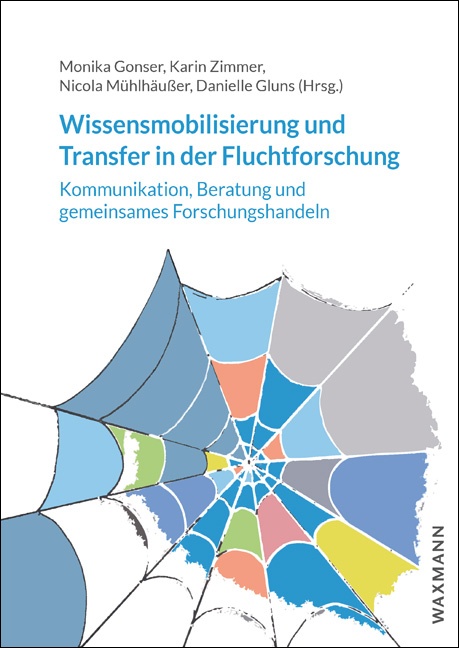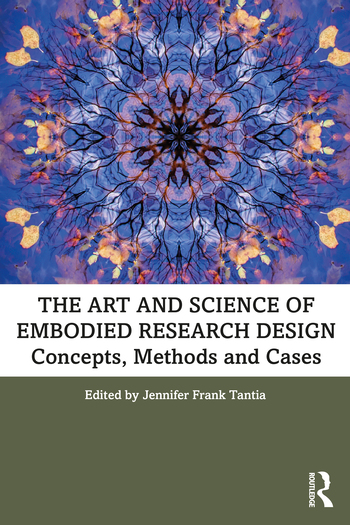




Der Austausch zwischen Wissenschaft und Praxis wird aktuell häufig thematisiert: Wie lässt sich Transfer konzeptualisieren und systematisieren? Wie kann ein solcher Transfer konkret aussehen? Was sind Beispiele für Transfer in der Fluchtforschung und was wird aus Beispielfällen sowohl für die Wissenschaft als auch für die Praxis ersichtlich?
In diesem Buch wird Transfer zunächst im Sinne einer Wissensmobilisierung konzeptualisiert: als Kommunikation, Beratung oder kooperatives Handeln und Forschen. Daran anschließend greift der Band die Fluchtforschung als Themenbereich heraus und die Autorinnen und Autoren diskutieren Transfer etwa aus Sicht der verschiedenen Bildungsbereiche, der Sozialen Arbeit und der öffentlichen Verwaltung. Fallbeispiele und Erläuterungen bieten einen Einstieg in das Thema und machen Transfer auch außerhalb der eigenen Fachperspektive verständlich. Interviews mit Akteur*innen aus der praktischen Arbeit ergänzen die Beiträge.
Der Sammelband richtet sich an alle, die sich aus unterschiedlichen Blickwinkeln mit dem Themenkreisen Transfer und dem Ankommen und der Teilhabe von Geflüchteten beschäftigen – an Entscheidungstragende in den Kommunen und Ländern, Forschende und Forschungsfördernde, Geflüchtete, Ehrenamtliche und Akteur*innen aus der Wirtschaft und der Zivilgesellschaft.

The Art and Science of Embodied Research Design: Concepts, Methods and Cases offers some of the nascent perspectives that situate embodiment as a necessary element in human research. This edited volume brings together philosophical foundations of embodiment research with application of embodied methods from several disciplines.
The book is divided into two sections. Part I, Concepts in Embodied Research Design suggests ways that embodied epistemology may bring deeper understanding to current research theory, and describes the ways in which embodiment is an integral part of the research process. In Part II, Methods and Cases, chapters propose novel ways to operationalize embodied data in the research process. The section is divided into three sub-sections: Systems of Analysis, Interviews and Observations, and Creative and Mixed Methods. Each chapter proposes a method case; an example of a previously used research method that exemplifies the way in which embodiment is used in a study.
As such, it can be used as scaffold for designing embodied methods that suits the researcher’s needs. It is suited for many fields of study such as psychology, sociology, behavioral science, anthropology, education, and arts-based research. It will be useful for graduate coursework in somatic studies or as a supplemental text for courses in traditional research design.
„With this volume, Jennifer Tantia continues her extended efforts to weave together what began half a century ago as a widespread and often competitive collection of brilliant healers, craftspeople, therapists, and visionaries into a community focusing on shared models of public education, professional trainings, and research grounded theories. Dr Tantia has played a difficult and crucial role, facing a number of practitioners who often resist what they see as the intrusions of critical thinking into their personal views of their works. She has worked skilfully over a number of years to show that without collaborative and critical research, our works are confined to a small population of people who have the money and leisure to profit from them. Her support of reflective thinking about these works, and her gathering of the thoughtful people in this and other volumes, to these new modes of healing and transformation — opens the doors to the public access now accorded to biomedicine and certain approaches to psychotherapy.“ — Don Hanlon Johnson, Professor of Somatics, California Institute of Integral Studies, USA
„The concept of embodiment has been sadly underrepresented in research methodologies to date, possibly due to the challenges it might bring to traditional researchers. These chapters serve to explore rationales for addressing embodiment in both quantitative and qualitative research paradigms helping to provide a platform for future researchers to build their proposal. I congratulate the editor Dr. Jennifer Tantia and all the authors, for this much-needed contribution to research methodology“ — Professor Helen Payne, PhD, UKCP Reg. Psychotherapist and ADMP UK Reg. Dance Movement Psychotherapist
„This volume restores much needed embodied intimacy to ways of knowing that are full of texture and meaning.“ — Les Todres, Emeritus Professor, Bournemouth University, UK
„This latest volume continues to successfully unpack ‘embodiment’ as a conceptual frame for research. The carefully curated chapters powerfully add to a growing literature that places experiencing at the very heart of understanding the body’s own logic without negating other forms of data. This practical and rigorous volume is a must-read for students, somatic practitioners and researchers.“ — Kevin Krycka, Associate Dean of Arts and Sciences, Professor of Psychology, Seattle University, USA. Chair, Gendlin Center for Research
„Applications of embodied research are still novel and require discernment, even for those who know something about knowing through and with the body. The book brings together the many conceptualizations of embodiment and presents an array of approaches. The thought provoking collection of cases invites the reader to explore their nuances and learn to communicate nonverbal discoveries.“ — Tomoyo Kawano, Director, Dance/Movement Therapy Program at Antioch University, USA
Dr. phil. Beatrice Schlee
bodymemory
info@bodymemory.de
Social Innovation Lab
Kreativpark Lokhalle
Paul-Ehrlich-Straße 7
D-79106 Freiburg
St.nr: 06487/84330
©bodymemory Beatrice Schlee






